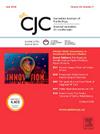美国和加拿大心脏重症监护病房心源性休克的护理和结局差异:CCCTN注册观察
IF 5.8
2区 医学
Q1 CARDIAC & CARDIOVASCULAR SYSTEMS
引用次数: 0
摘要
背景:心源性休克(CS)的死亡率仍然很高。已经描述了重症监护治疗中显著的医院间异质性,这反映了缺乏高质量的证据来指导最佳治疗。我们的目的是描述美国(US)和加拿大CS患者的实践和临床结果的差异。方法:重症心脏病学试验网络(CCCTN)是三级心脏重症监护病房(CICUs)的研究网络。数据收集时间为2017-2022年。该分析包括34个美国和8个加拿大的网站。关注的结果包括基线临床差异、重症监护监测和治疗的使用,以及美国和加拿大住院的CS患者之间的全因住院死亡率。结果:在23299名入院者中,19%患有CS (n=4336,美国88%,加拿大12%)。接受有创血流动力学治疗的患者比例(美国:80.8%,加拿大:74.8%,p=0.0015),血管活性药物治疗的患者比例(美国:88.9%,加拿大:82.1%)。结论:在当代登记中,美国和加拿大对CS的管理存在差异,美国使用有创监测和MCS的比例更高。虽然美国的调整死亡率较低,但在没有随机试验数据的情况下,这些治疗的效果无法可靠地确定。本文章由计算机程序翻译,如有差异,请以英文原文为准。
Differences in Care and Outcomes in Cardiogenic Shock in Cardiac Intensive Care Units in the United States and Canada: CCCTN Registry Insights
Background
Mortality in cardiogenic shock (CS) remains high. Significant interhospital heterogeneity in critical care therapies has been described, which reflects the lack of high-quality evidence to guide optimal treatment. We aimed to describe differences in practices and clinical outcomes among patients with CS in the United States and Canada.
Methods
The Critical Care Cardiology Trials Network (CCCTN) is a research network of tertiary cardiac intensive care units (CICUs). Data collection spanned from 2017 to 2022. The analysis included 34 American and 8 Canadian sites. The outcomes of interest included baseline clinical differences, use of critical care monitoring and therapies, and all-cause in-hospital mortality between patients with CS in the United States and Canada admitted to CICUs.
Results
Among 23,299 admissions, 19% had CS (n = 4336, 88% United States vs 12% Canada). The proportion of patient who received invasive hemodynamics (United States: 80.8% vs Canada: 74.8%, P = 0.0015), vasoactive medications (United States: 88.9% vs Canada: 82.1%, P < 0.0001), temporary mechanical circulatory support (tMCS) (United States: 39.4% vs Canada: 23.1%, P < 0.0001) were more frequent in US centres. Intra-aortic balloon pump was the most common tMCS device in both countries. After multivariable adjustment, in-hospital mortality was higher in Canada vs United States (37.1% vs 29.4%, odds ratio [OR]: 1.47; 95% confidence interval [CI], 1.18-1.83).
Conclusions
In a contemporary registry, management of CS was heterogenous between the United States and Canada, with higher use of invasive monitoring and MCS in the US. Although adjusted mortality was lower in the United States, the effects of these treatments cannot be reliably determined without randomized trial data.
求助全文
通过发布文献求助,成功后即可免费获取论文全文。
去求助
来源期刊

Canadian Journal of Cardiology
医学-心血管系统
CiteScore
9.20
自引率
8.10%
发文量
546
审稿时长
32 days
期刊介绍:
The Canadian Journal of Cardiology (CJC) is the official journal of the Canadian Cardiovascular Society (CCS). The CJC is a vehicle for the international dissemination of new knowledge in cardiology and cardiovascular science, particularly serving as the major venue for Canadian cardiovascular medicine.
 求助内容:
求助内容: 应助结果提醒方式:
应助结果提醒方式:


